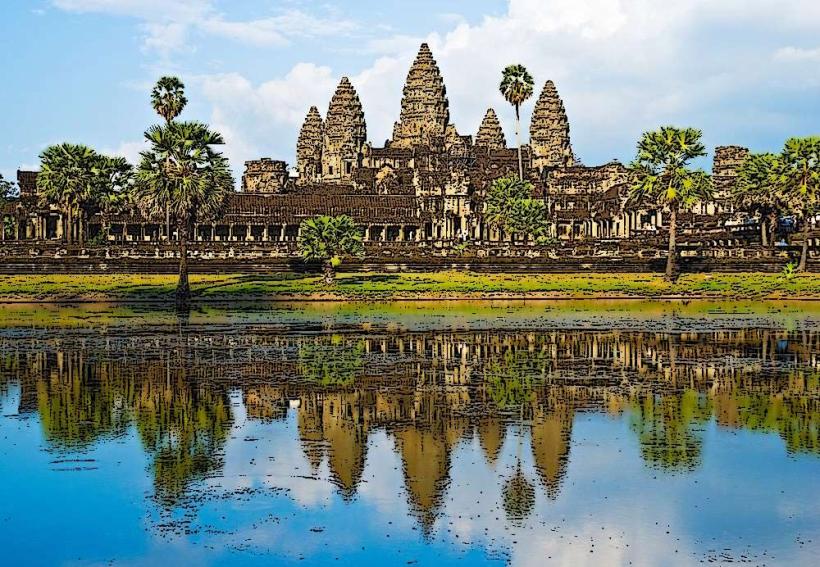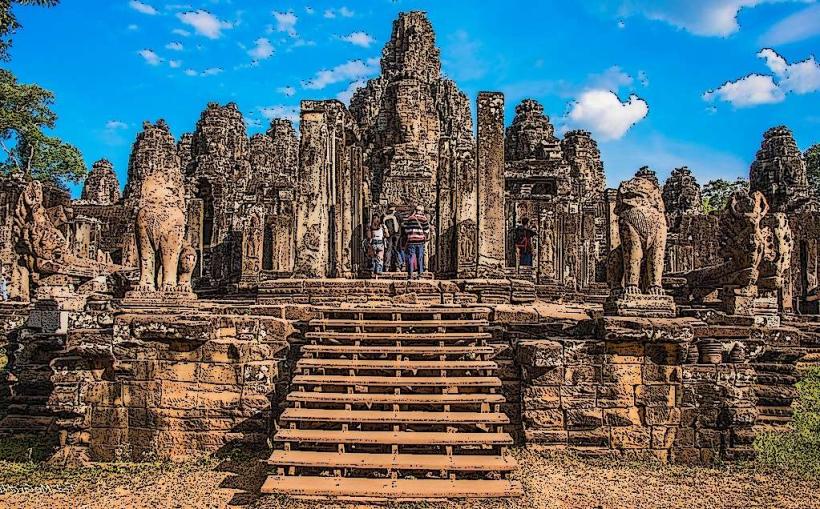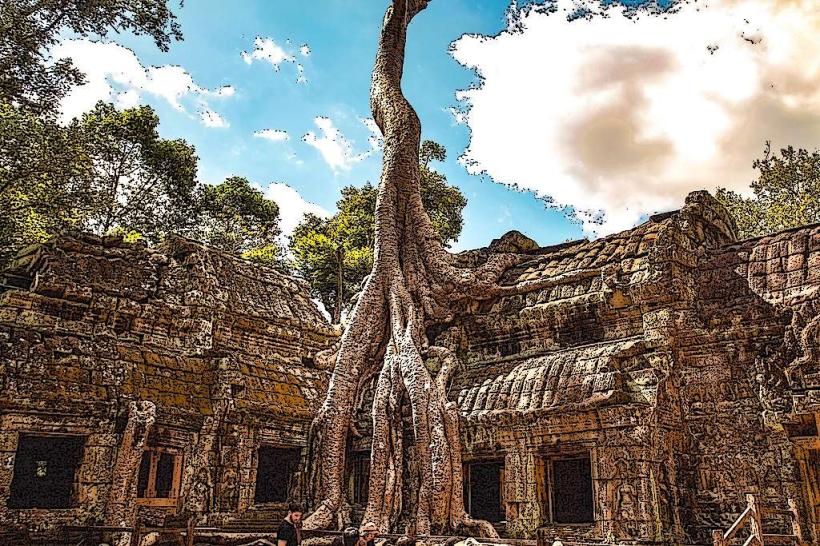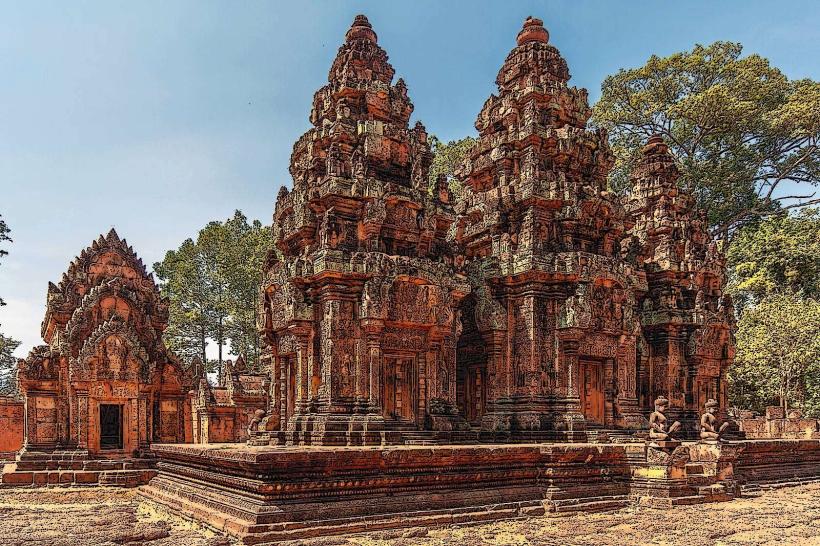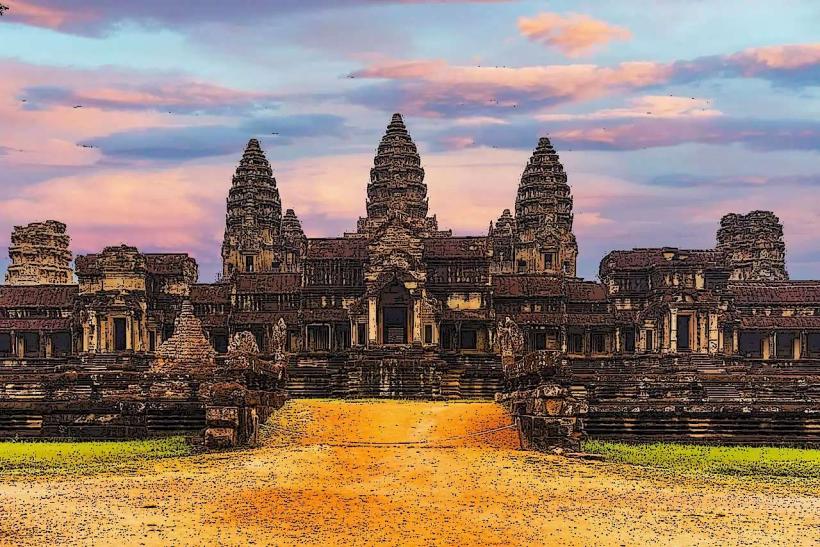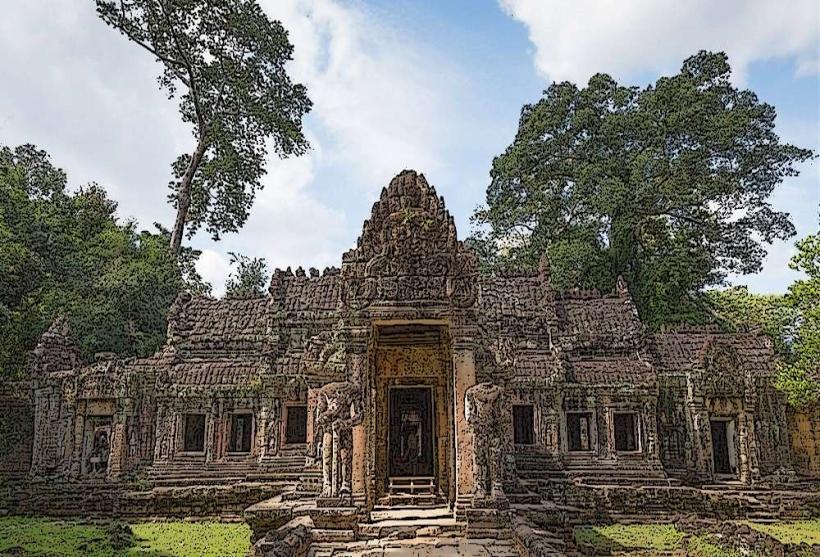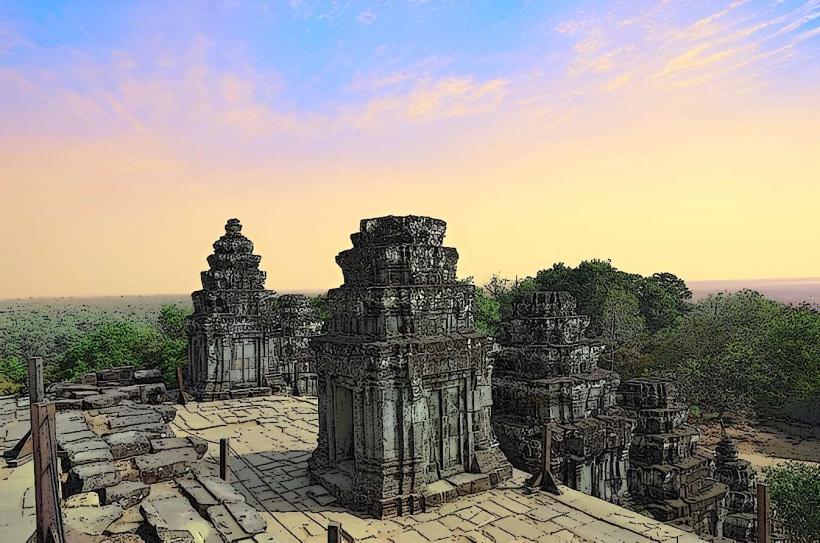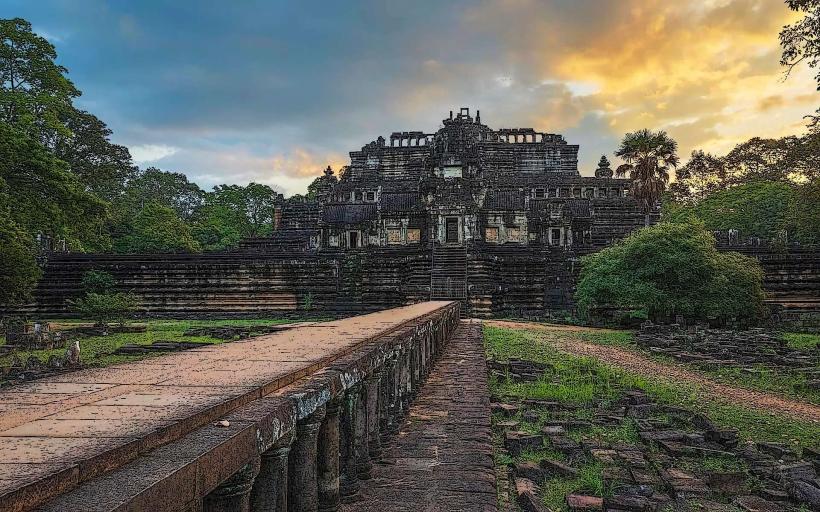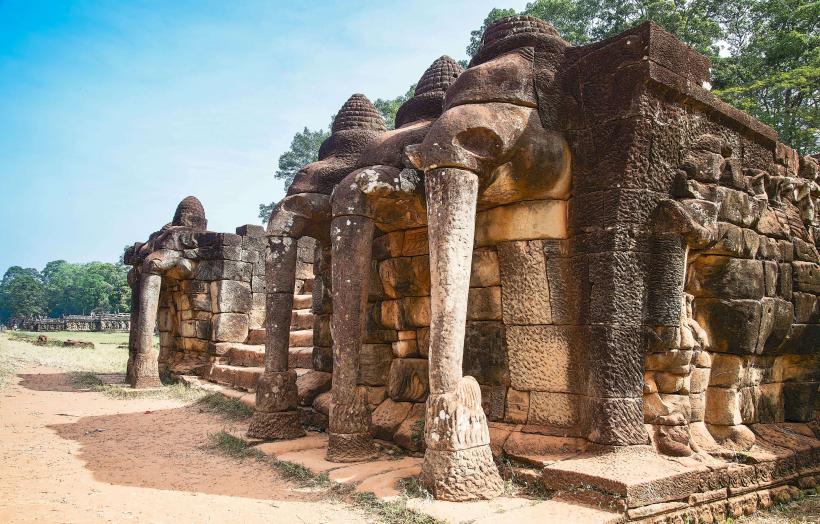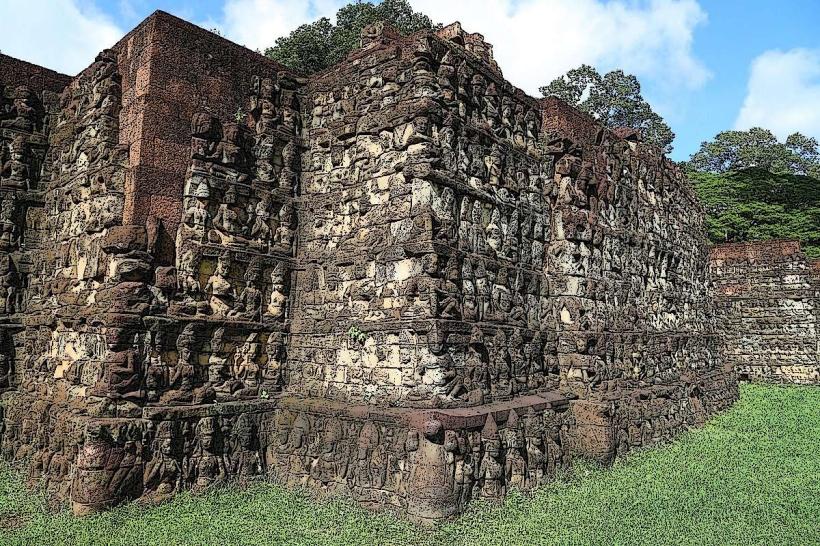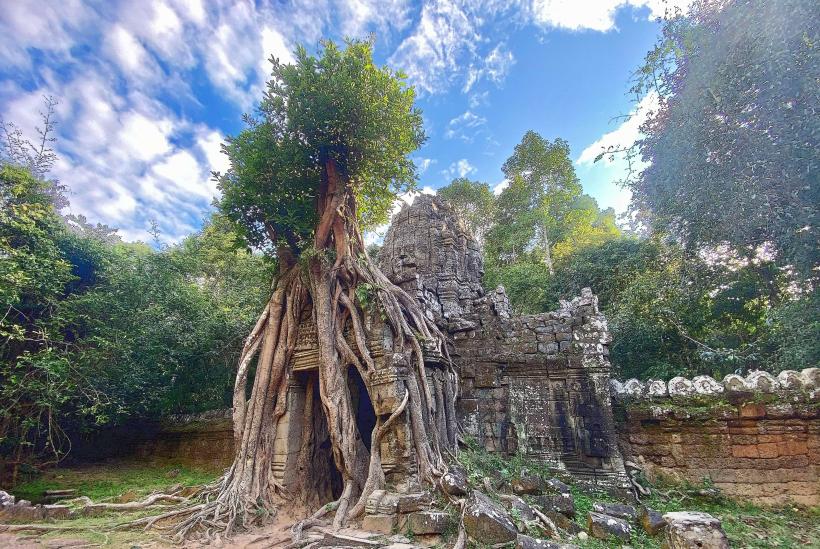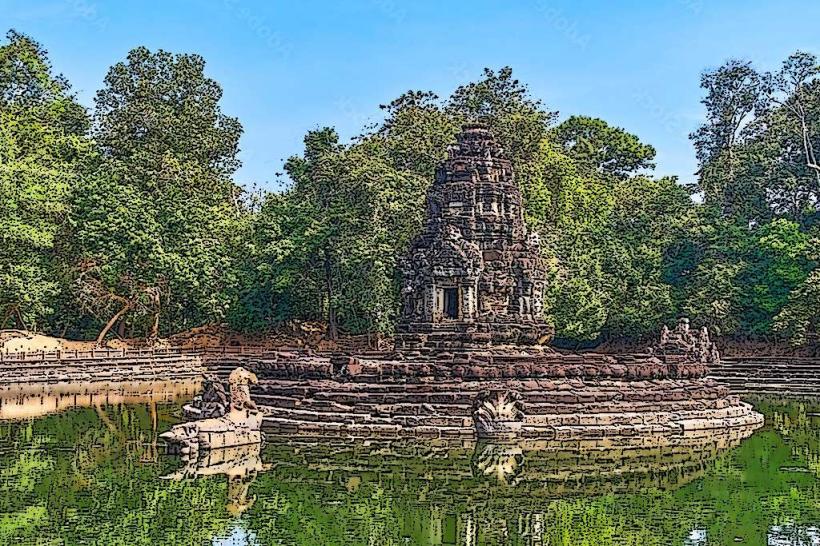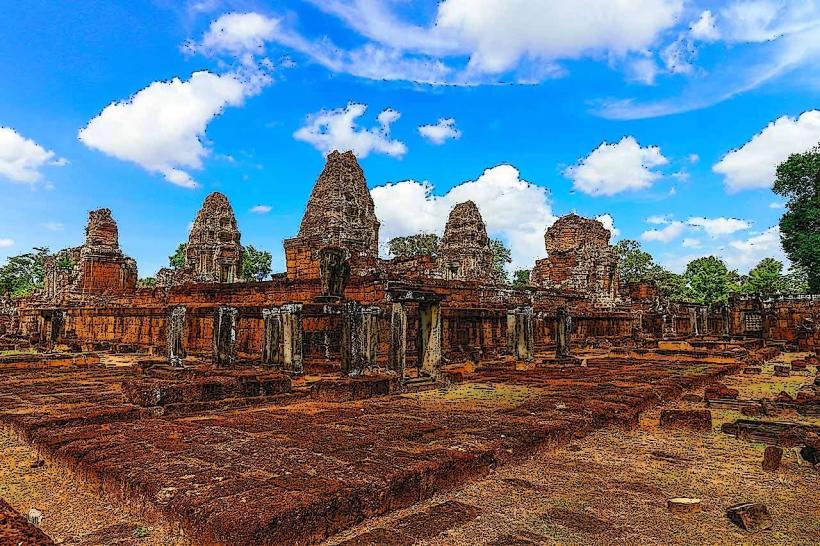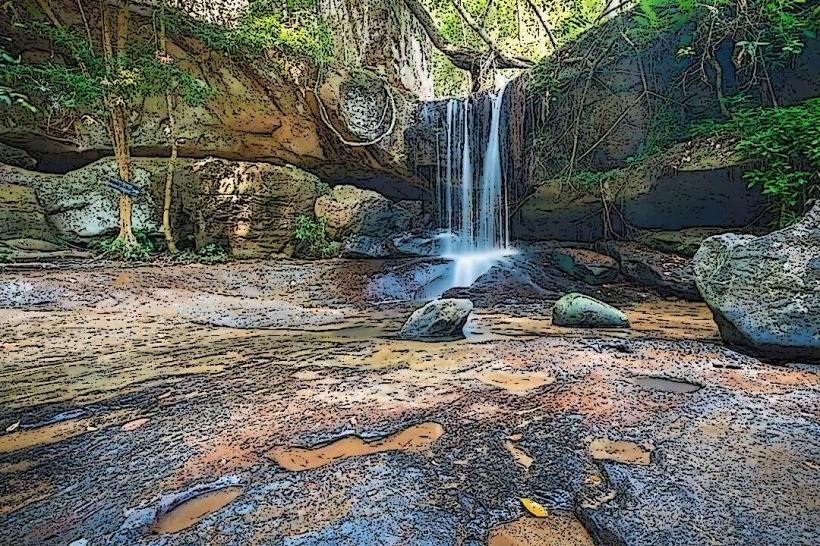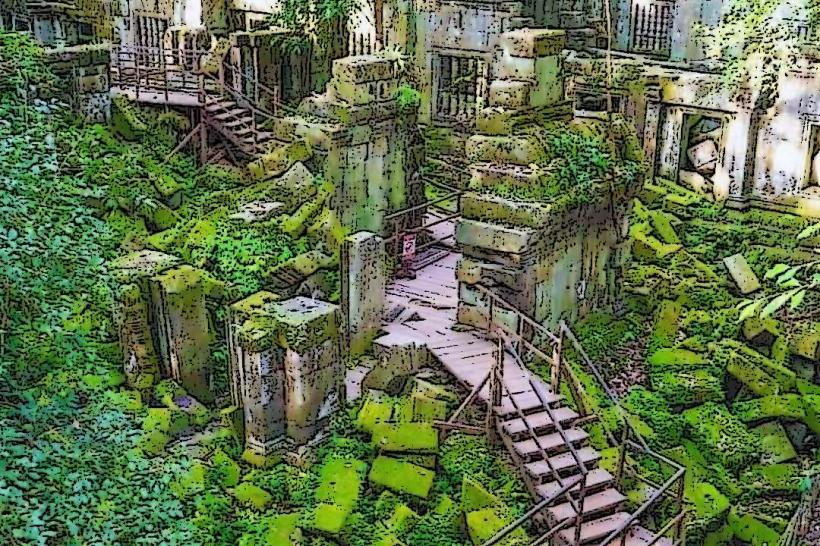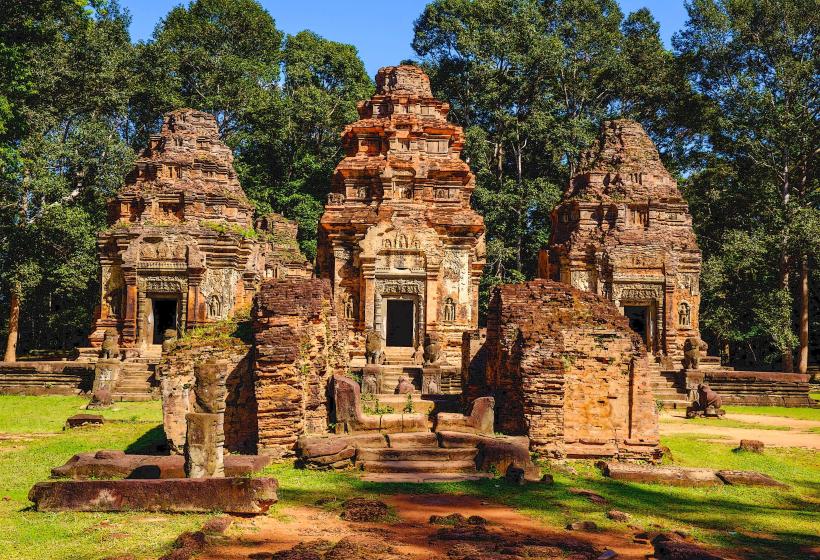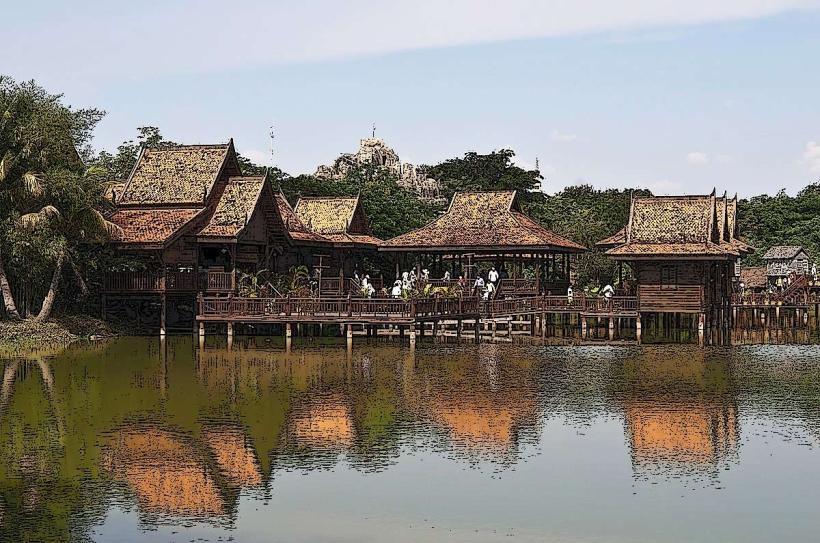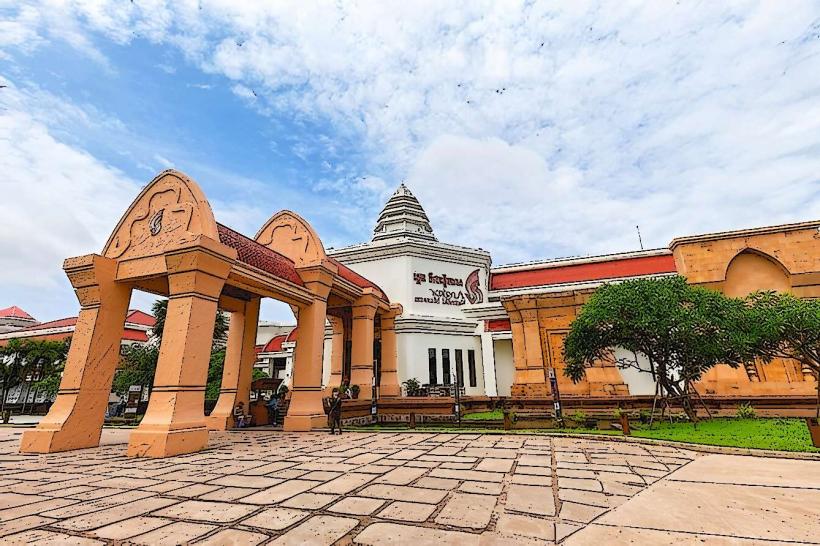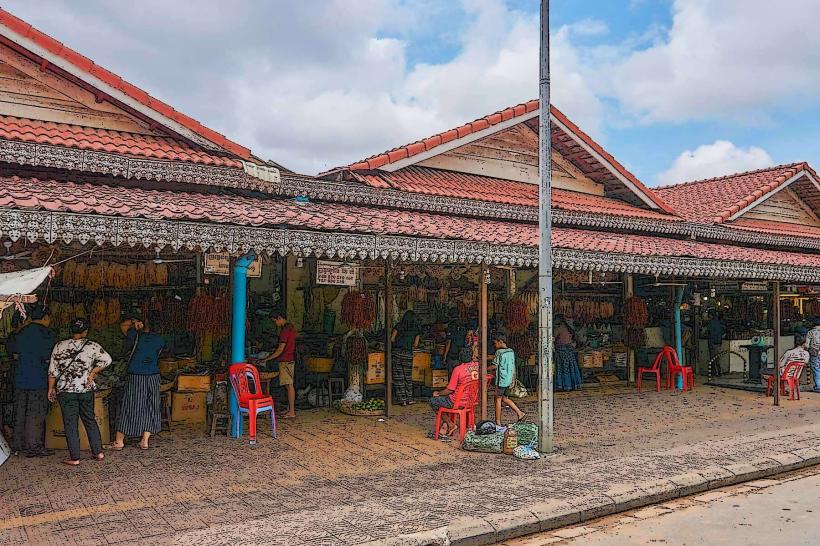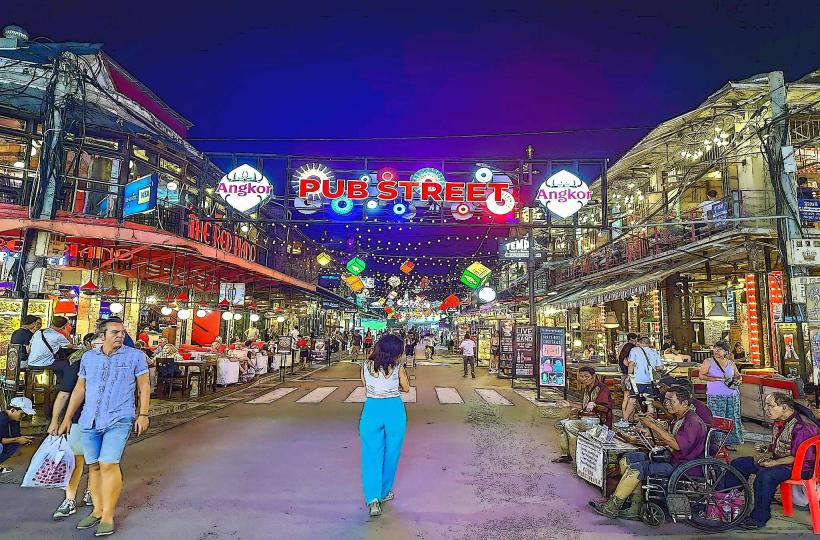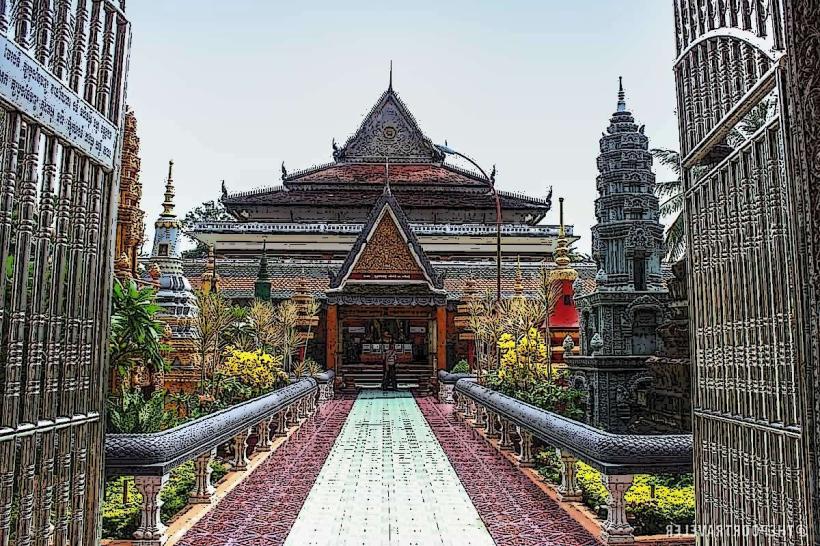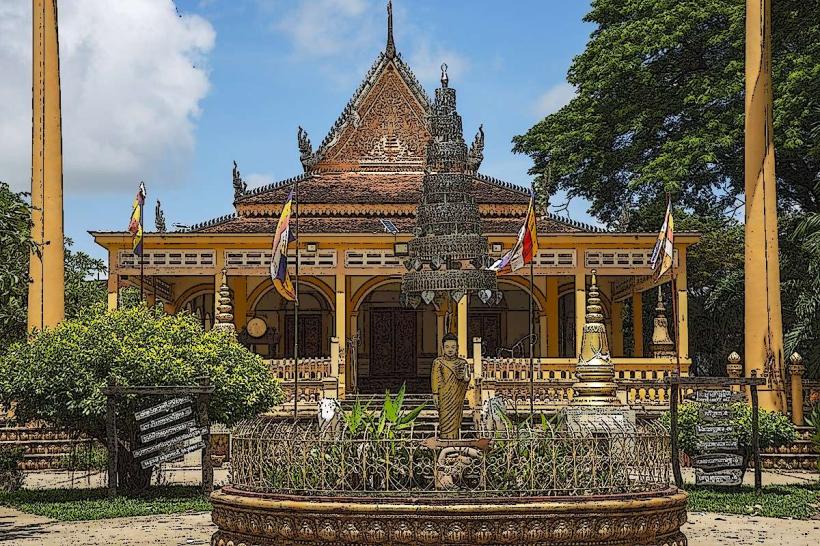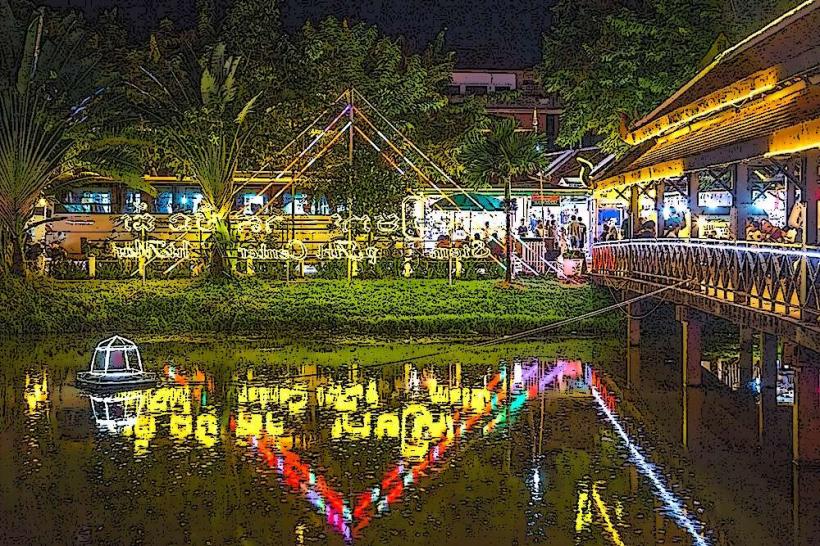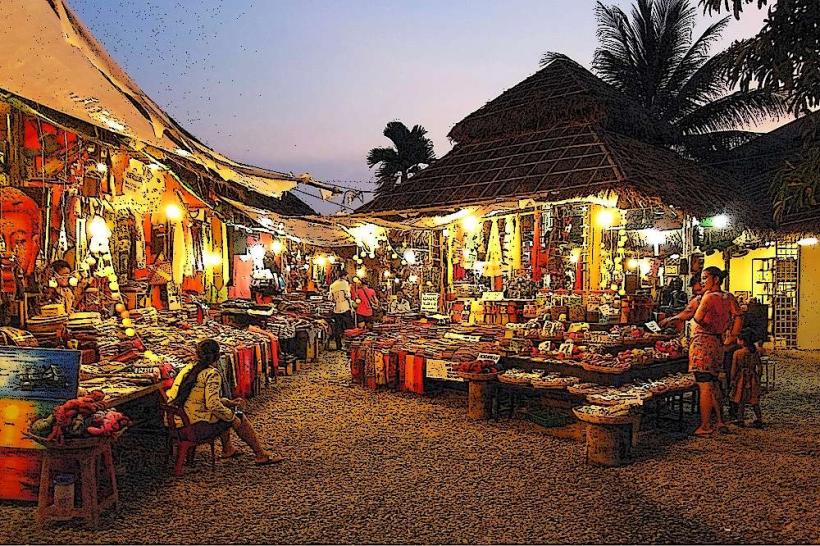Information
Landmark: Pre RupCity: Siem Reap
Country: Cambodia
Continent: Asia
Pre Rup – A Monument to Khmer Architecture and Royal Power
Pre Rup is an impressive temple-mountain located in the Angkor Archaeological Park, about 13 kilometers northeast of Angkor Wat. Built in the late 10th century by King Rajendravarman II, Pre Rup is an early example of the classical Khmer temple style, featuring a temple-mountain design. This structure is primarily known for its elevated platform, angular design, and fine carvings. The temple is particularly famous for its sunset views, making it a popular spot for photographers.
History of Pre Rup
- Constructed in the late 10th century (around 961–963 AD) during the reign of King Rajendravarman II.
- Pre Rup was dedicated to Shiva, the Hindu god of destruction and transformation, reflecting the king’s devotion to Shiva and his efforts to reinforce the royal lineage through religious symbolism.
- The temple served as a state temple and a funerary site, built to honor the king’s ancestors and provide a place for royal rituals.
- Pre Rup's design is thought to represent a cosmic mountain (a common theme in Khmer temple architecture), symbolizing the connection between heaven and earth.
Architectural Features of Pre Rup
1. Temple-Mountain Design
- The temple follows the temple-mountain style, a popular feature of Khmer architecture, which consists of a series of tiers and pyramidal structures.
- Pre Rup is five-tiered, with the highest tier being the sanctuary. This design represents the cosmic mountain, symbolizing the center of the universe in Hindu and Buddhist beliefs.
- The temple is raised on a large platform, giving it an imposing presence that stands out in the landscape.
2. Central Sanctuary and Towers
- The temple’s central area features three central towers, with the main tower located at the top of the temple, providing an impressive view of the surroundings.
- The central sanctuary consists of three towers, representing the three main gods of Hinduism: Brahma, Vishnu, and Shiva, or in some interpretations, the sun, the moon, and the stars.
- The towers are each topped with a finely detailed lintel, and several shrines are embedded in the walls.
3. The Long, Decorated Galleries
- Pre Rup features long galleries with decorated walls, elegant carvings, and niches for statues.
- The temple's reliefs include divine figures, mythological creatures, and Hindu deities like Shiva and Parvati, as well as scenes from Hindu mythology.
- Apsaras (celestial dancers) and other sculptural details are found on the temple’s walls, showcasing the artistry and craftsmanship of the Khmer Empire.
4. The Cruciform Shape of the Courtyard
- The central courtyard of Pre Rup is designed in a cruciform shape, with the temple’s walkways forming a cross. This arrangement is unique among Angkor temples and enhances the symbolic spiritual connection of the site.
- The entrances to the temple are aligned with the cardinal points, which are significant in Hindu cosmology.
5. The Use of Red Brick
- Unlike some of the other temples in the Angkor complex, Pre Rup is constructed primarily from red brick, which gives the temple its distinct reddish hue.
- This material contrasts with the more common sandstone used in other temples, lending Pre Rup a unique texture and appearance.
Significance of Pre Rup
1. A Royal Funerary Temple
- Pre Rup is often regarded as a funerary temple, designed to honor the king and the royal family. It was likely used for cremation ceremonies, and some scholars suggest that it was specifically designed to serve as a temple for royal burial rites.
- The temple’s tiered structure may have been intended to represent the journey to the afterlife, with the ascending levels symbolizing the ascent to the heavens.
2. Connection to Shiva
- Pre Rup was built in honor of Shiva, one of the principal deities of Hinduism.
- The temple’s structure, with its central sanctuary and towers, might also symbolize the Shiva Linga, representing the union of the divine and the human.
- The temple was likely a place of royal worship, with the king and court offering prayers and sacrifices to Shiva to secure the empire's well-being.
3. Symbolism of the Temple-Mountain
- As a temple-mountain, Pre Rup is a symbolic representation of Mount Meru, the sacred Hindu mountain at the center of the universe.
- The tiers of the temple represent the layers of the world, from the earthly realm to the heavenly abode of the gods. The ascending structure of Pre Rup symbolizes the spiritual ascent of the soul.
Visiting Pre Rup
1. Best Time to Visit
- The best time to visit Pre Rup is late afternoon, when the sunset illuminates the temple, casting a warm, golden glow on the red bricks and highlighting the detailed carvings.
- Visiting early in the morning is also ideal to avoid the crowds and enjoy a more peaceful atmosphere.
2. Getting There
- Pre Rup is located within the Angkor Archaeological Park, and is about 13 km from Angkor Wat.
- It is part of the Small Circuit route, and visitors can reach it by tuk-tuk, bicycle, or private car.
- The temple is close to other famous sites like East Mebon, Ta Som, and Neak Pean, making it easy to combine in one tour of the Angkor complex.
3. What to Expect
- Pre Rup is a relatively quiet temple compared to the more famous Angkor Wat, offering a more intimate experience for visitors.
- The views from the top of the temple are breathtaking, especially during sunset or sunrise, making it a photographer’s paradise.
Conclusion
Pre Rup is a remarkable example of Khmer temple architecture that embodies religious symbolism, royal power, and spiritual significance. Its tiered structure, unique red brick construction, and elaborate carvings make it a must-see site for visitors to the Angkor Archaeological Park. Whether you are drawn to its historic importance, architectural beauty, or simply its stunning sunset views, Pre Rup offers an unforgettable glimpse into the spiritual and royal history of Cambodia.

